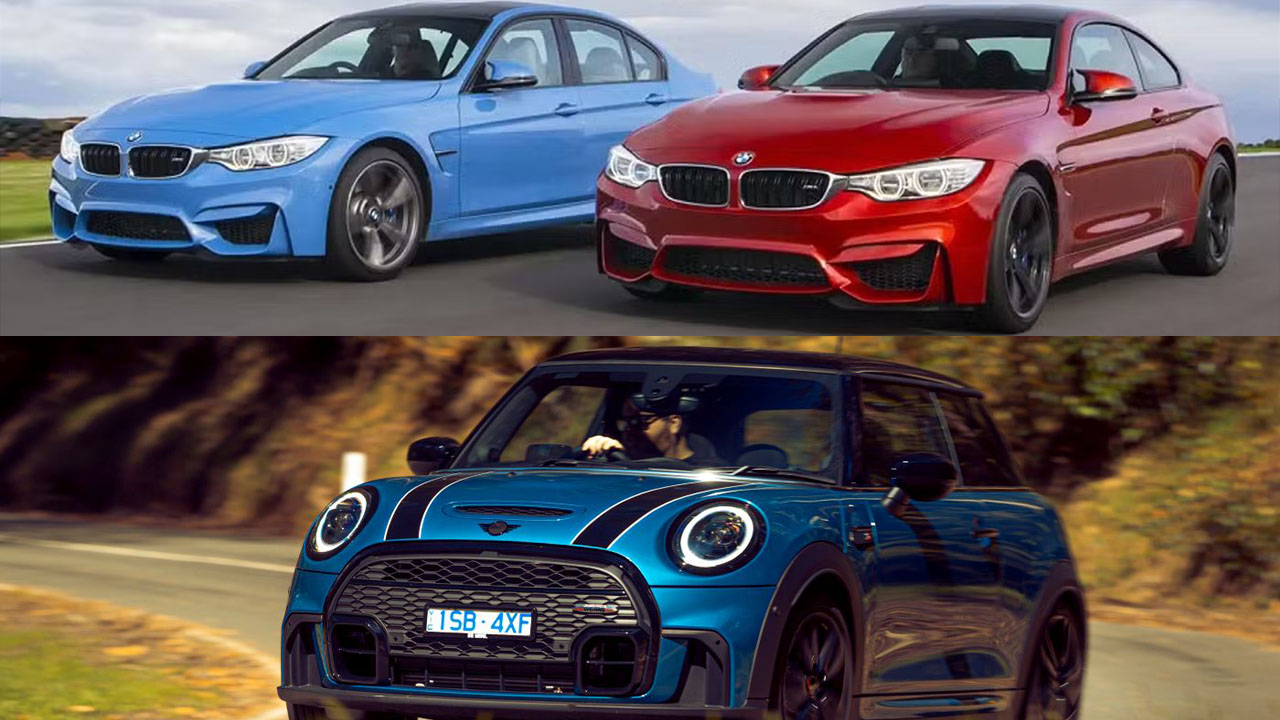While movie stars and oil tycoons cruise around in their hybrid hypercars, the rest of us car enthusiasts can only watch in envy. Fortunately, keeping pace with billionaires on public roads has become much more achievable in recent years.
Car manufacturers who remain committed to their customers continue to utilize the latest innovations to produce some impressive sports cars that won’t completely drain your bank account. In this list, we’ll highlight five sports cars that can accelerate from 0 to 60 mph faster than you can say “sold.”
While we won’t include prices for accuracy’s sake, rest assured that each of these cars will cost no more than $45,000.
Cars With The Best Cost-To-Performance Ratio
Although many of them might not directly rival Ferraris and Lamborghinis off the factory floor, a few simple modifications will allow you to easily outpace any million-dollar supercar.
Volvo V40 T4 Momentum
Swedes have consistently proven their expertise in car manufacturing, and this unassuming five-door hatch is no exception.
Featuring a tried-and-tested Scandinavian design along with Volvo’s renowned safety features, it can reach 60 mph in under 6.9 seconds. This time beats the vast majority of cars on the road today, especially those that can transport the whole family comfortably.
A clear example of this adjustment is the Volvo V40. Originally launched in 2015 as Volvo’s entry-level hatchback, it was first offered in the T2 trim.
However, due to the $20,000 surcharge imposed on the T2 under the new emissions scheme, it has been replaced by the more powerful T4 variant, which carries a reduced $10,000 surcharge.
The new V40 T4 is powered by a turbocharged 2.0-litre engine that generates a solid 187bhp and 300Nm of torque. In contrast, the outgoing T2 featured a smaller 1.5-litre turbocharged engine with 122bhp and 220Nm of torque.
Volvo’s engine naming convention distinguishes these two trims clearly, and the T4’s performance advantage is immediately noticeable.
The T4 sprints from 0-100km/h in 6.9 seconds, and with maximum torque arriving at just 1,300rpm, it delivers quick and confident acceleration right off the line.
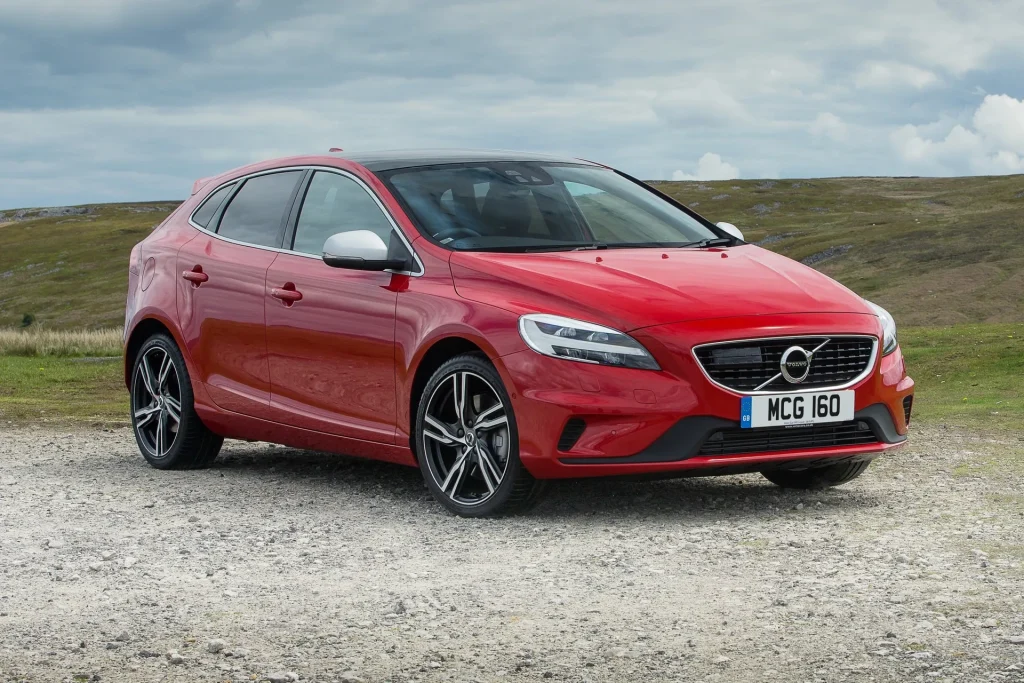
Despite its strong performance credentials, the V40 T4 doesn’t pretend to be a hot hatch. Instead, it presents itself as a refined and comfortable everyday hatchback with extra punch. The R-Design trim, which is the higher-tier variant tested here, adds a sportier visual edge.
It includes twin tailpipes, a contrast rear diffuser, a unique front grille, redesigned bumpers, silver side mirrors, and attractive 18-inch alloy wheels. These enhancements lend the V40 a sharper and more aggressive stance without compromising its daily usability.
Inside, the R-Design continues to add value. The cabin features a slightly different steering wheel, R-Design branded carpets and pedals, and an 8.0-inch digital dashboard.
One of the most notable additions is the panoramic glass roof, which comes standard with this trim. The overall cabin experience is functional and comfortable.
The front seats offer ample support and cushioning, contributing to a relaxed driving experience. However, space in the rear is tighter—ideal for four adults, but a bit cramped for three across the back.
In terms of driving dynamics, the V40 remains easy to pilot. The suspension is well-damped, the steering is precise (though lacking in feedback), and the compact size makes navigating tight urban spaces a breeze. It’s a car that blends comfort, style, and everyday practicality with just enough performance to keep things interesting.
However, the cabin design does show signs of aging. The phone-style number pad on the centre console feels outdated, especially when compared to the sleek, tablet-like infotainment systems in newer Volvos.
Despite this, the V40 T4 R-Design stands out as a solid, well-rounded option for buyers seeking a stylish and capable premium hatchback with a bit of extra power under the hood.
Also Read: 5 Reliable Old Trucks and 5 That Are Best Left Alone
Renault Clio RS 220 Trophy
This quirky hatchback’s RS variant has evolved significantly from the chubby track performer of the early 2000s. The Clio now boasts a more refined, grown-up design while still maintaining its sporty roots.
With 168 kW of power and 280 Nm of torque, it can reach 60 mph in approximately 6.6 seconds. While you might be tempted to zoom past crowds, you’ll want to be careful — this car is simply too attractive for its price point.
Renaultsport has made a series of subtle updates to the Clio, refining what is already a well-rounded performance supermini. While these tweaks enhance both the interior and exterior, they don’t fully address the car’s core shortcoming—its lack of driver involvement compared to rivals.
A manual gearbox is still conspicuously absent, which is disappointing considering how enjoyable the rest of the Clio RS package is.
The car offers sharp handling, striking design, a comfortable ride, and a satisfying soundtrack. However, for purist enthusiasts, the Clio may not deliver the same level of engagement as some of its manual-equipped competitors.
Renault is on the verge of completing a comprehensive overhaul of its lineup, with the upcoming launch of the new Scenic in the UK marking the final piece of the puzzle.
From the compact Captur to the larger Kadjar, the entire range now shares a cohesive visual identity—highlighted by the prominent diamond badge and bold front-end styling—along with advanced technologies throughout.
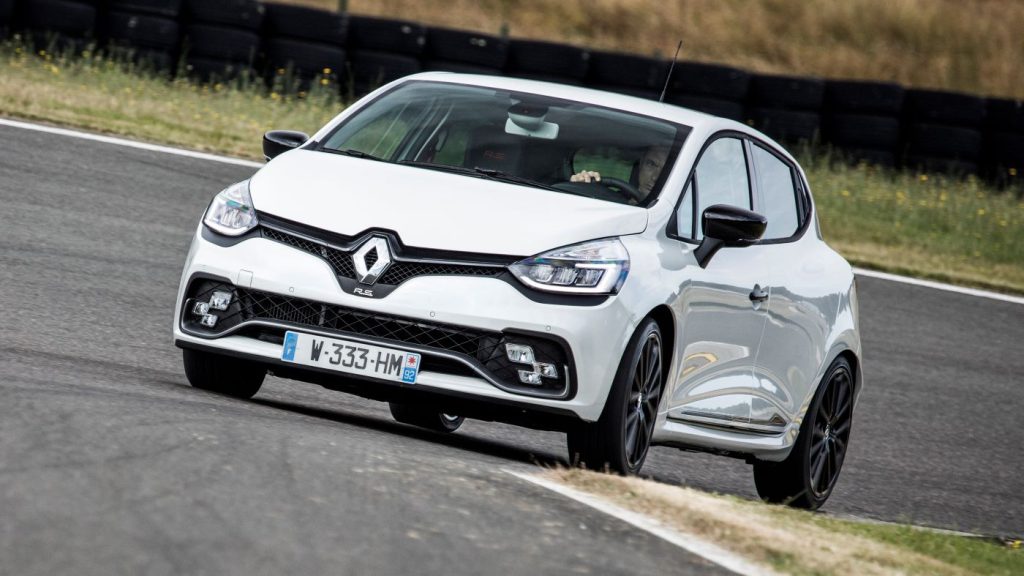
This renewal began four years ago with the Clio supermini, a car that originally launched in 1991 as the successor to the beloved Renault 5.
The Clio was also the first model to showcase Laurens van den Acker’s new design philosophy, which helped it gain widespread popularity across global markets.
Determined to maintain the Clio’s appeal, Renault has introduced a series of mid-cycle updates for the fourth-generation model in 2016.
While the majority of Clio sales will come from the standard petrol and diesel variants, Renault’s legacy of hot hatchbacks makes any new RS version a noteworthy arrival. This is our first opportunity to test the facelifted Clio RS on UK roads.
The RS 220 Trophy now takes its place as a permanent and more focused variant within the Clio Renaultsport range.
It commands a premium of £2,700 over the standard RS model, but offers a performance boost with an additional 20bhp. Enhancements also include larger 18-inch alloy wheels and a lowered suspension setup for improved dynamics.
Our test car was equipped with the optional Akrapovic exhaust system, a £900 upgrade that adds to the car’s aural appeal and performance character.
Exterior revisions include redesigned front and rear lighting elements, new bumpers, and distinctive three-piece LED fog lamps inspired by the Renault R.S. 16 concept.
These additions, combined with the striking £1,300 Liquid Yellow paint option on our test vehicle, ensure the Clio RS 220 Trophy stands out on the road.
Inside the cabin, Renault has introduced higher-quality materials and a more intuitive dashboard layout. The RS 220 Trophy features the brand’s R-Link infotainment system, which includes a seven-inch touchscreen and TomTom navigation.
The overall interior build feels solid, though some of the upscale finishes come at a price—the leather upholstery in our test car is a £1,250 option, with heated seats adding another £250.
While these updates make the Clio RS 220 Trophy more appealing and refined, they don’t quite bridge the gap in driver engagement that sets its manual-shifting rivals apart. Nonetheless, the RS remains a fun, capable hot hatch with plenty of visual and performance flair.
Mini Cooper JCW Sports
No list of affordable sports cars would be complete without a model from the legendary British carmaker that continues to impress with each new release.
Not only does the Mini Cooper JCW Sports accelerate to 60 mph in 6.1 seconds, but you’ll look stylish doing it. The 2.0-litre turbo engine is housed within an updated chassis, and the car comes with a variety of striking paint jobs, including bold racing stripes to enhance its visual appeal.
Take the standard Mini Cooper’s compact size, lively character, and almost go-kart-like feel, add a more potent engine, a suspension fine-tuned for sharper handling, and distinct styling elements inside and out, and you have the Mini Cooper JCW (John Cooper Works).
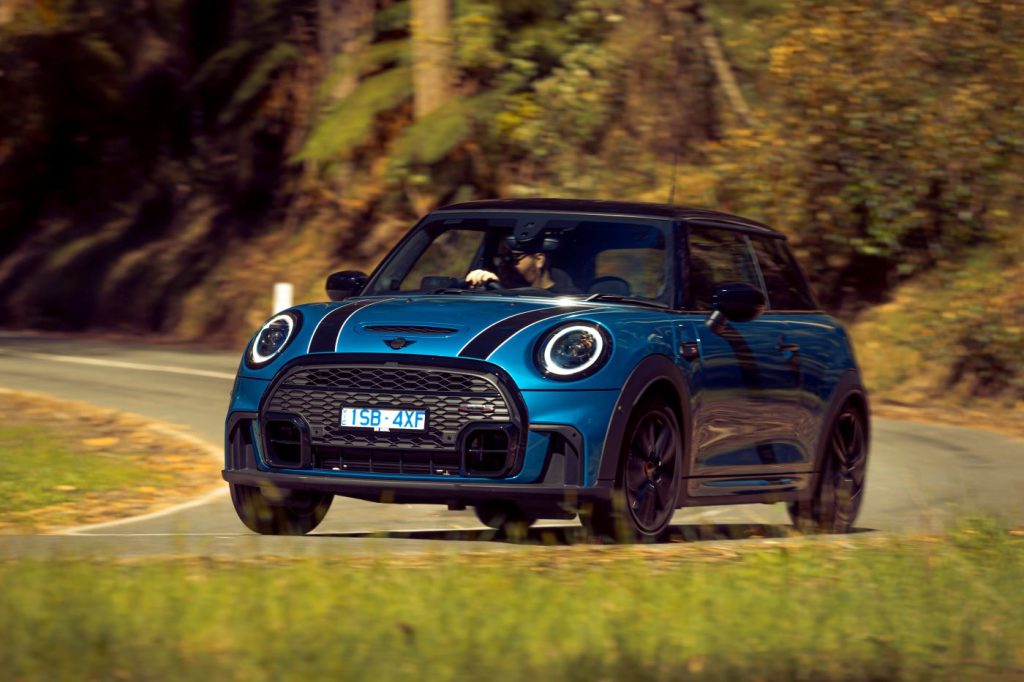
For 2025, the Mini Cooper JCW is powered by a 2.0-liter turbocharged four-cylinder engine paired with a seven-speed dual-clutch automatic transmission. While horsepower stays the same as last year’s model at 228, torque has been increased to 280 pound-feet, up from 236.
Available as either a two-door hardtop or convertible, the Mini Cooper JCW has always been about fun and delivering an exhilarating driving experience. The 2025 model follows this same formula, providing the same level of excitement and a ride that is as firm as you’d expect from a performance-oriented car.
However, concerns about ride quality are likely to vanish once you hit a smooth road under a clear blue sky. Just keep in mind that the small rear seats are better suited for holding blankets or picnic baskets rather than accommodating passengers.
Ford Focus ST1
Every year, Ford manages to make their Focus ST look more and more like a fighter jet, and the latest version is no exception.
With numerous additional options, an aggressive new body kit, a larger wing for improved downforce, and a modernized interior, the ST1 offers impressive value for money. You can expect to reach 60 mph in no more than 6.5 seconds.
It has been just over a year since the departure of the Ford Fiesta ST, a true icon in the hot hatch world, but its larger sibling, the Ford Focus ST, continues to thrive.
For now, at least. The Ford Focus is set to cease production in 2025 to make way for Ford’s shift towards electrification, but the company has been working hard to ensure that the performance version goes out with a memorable final run.
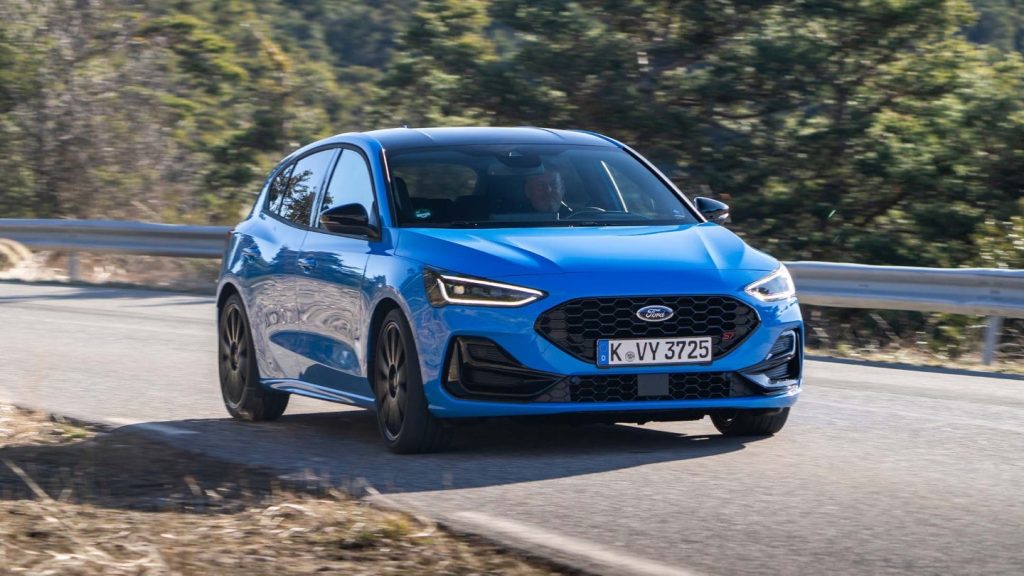
Available in both hatchback and estate configurations, the Focus ST has been a mainstay in Ford’s lineup since 1998. Currently in its fourth generation, the model first debuted in 2018 and received a mid-cycle update in 2021.
Since the discontinuation of the rally-inspired Focus RS after its third generation, the ST has remained the flagship of Ford’s hot hatch offerings. Now, the Edition, a sportier and more dynamic version, has been introduced for 2024.
The timing couldn’t be better, as the Volkswagen Golf GTI received an update in 2024, and the more performance-oriented Honda Civic Type R also saw a redesign and a boost in power earlier this year.
Also Read: 6 Cars with Top AWD Systems and 6 That Fall Short
Audi A1 1.8 TFSI Sport
It might not be an S1, but it certainly doesn’t come with the price tag of one either. This version of the Audi A1 still offers the iconic Audi design and build quality, now with an updated body kit and a fresh set of alloys. With 141 kW of power and 250 Nm of torque, it will take you to 60 mph in about 6.8 seconds.
While you could choose a used JDM tuner or a classic American muscle car, these hot hatches stand out as the superior option for budget-conscious buyers. Especially if you’re considering long-term reliability, safety, and service plans, they offer a much better value overall.
The Audi A1 has successfully carved out a niche as one of only two genuinely premium small cars available today. The other option in this segment is the Mini 5-Door Hatch, which shares a similar premium positioning and size.
For those seeking a larger, more expensive vehicle, the Mercedes A-Class is an alternative, but for anyone who prefers a less prestigious badge, options like the VW Polo are available, though they are fundamentally similar to the A1 beneath the surface.
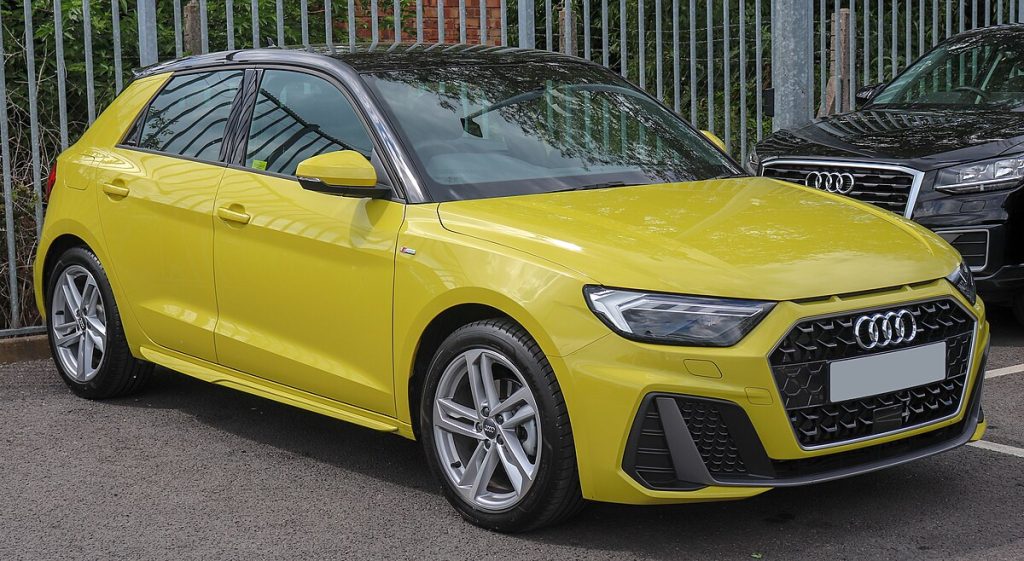
The Audi A1 offers a wide range of petrol engines, with options ranging from sensible to more powerful choices, and a variety of trims to choose from. These range from the basic Technik model to the more sporty Black Edition, which focuses on style.
However, for those who desire all-wheel drive for additional traction in slippery conditions, the A1 falls short, as Audi does not offer its quattro system on this model. If all-wheel drive is essential, customers will need to consider the Audi Q2 small SUV.
The Audi A1 delivers a strong performance with a smooth, controlled ride and good handling. It is notably quiet, with low wind and road noise at higher speeds.
However, cheaper trims lack sufficient equipment, and the Mini offers a more premium interior feel. The Peugeot 208, in particular, offers more features for less money.
Despite these drawbacks, the A1’s smooth ride and comfort around town make it a solid choice for city driving. Most trims offer comfort, though the sportier versions, particularly with 18-inch wheels, come with a firmer ride that may not be to everyone’s liking.
The engine lineup begins with the 25 TFSI, a 94bhp 1.0-litre petrol engine, although the 30 TFSI with 108bhp is more commonly seen and offers satisfactory performance. The 30 TFSI reaches 0-60mph in a respectable 9.1 seconds, with solid power delivery from 2000rpm.
For those looking for more performance to match the Mini 5-Door Hatch, the 35 TFSI, equipped with a 148bhp 1.5-litre engine, offers better flexibility and a quicker response at lower revs, making it faster and more versatile than the 30 TFSI.
In terms of ride comfort, the A1 excels in providing a smooth and controlled experience, especially with the Technik and Sport trims, which come with 16-inch wheels and standard suspension.
This combination makes the A1 particularly adept at handling uneven urban roads, offering a much smoother ride compared to the Mini, which tends to be jarring on the same surfaces. On the motorway, the A1 remains comfortable, with only minor fidgeting on very rough roads.
However, the S line trim with its 17-inch alloy wheels and sport suspension sacrifices some of this comfort, offering a firmer, less forgiving ride, especially on city streets. For those prioritizing comfort, it would be wise to avoid the 18-inch wheels available on higher trims, as they further stiffen the ride.
Cars With The Worst Cost-To-Performance Ratio
If you’re looking for speed, there’s no shortage of cars on the market that can provide exhilarating performance, but certain high-performance models should be skipped.
Finding truly bad cars has become increasingly difficult these days, as even budget manufacturers are producing impressive vehicles. However, some options still fall short of expectations. This led us to wonder: which performance models are the least desirable on the market today?
5. BMW M3/M4
Both the M3 and M4 are available with a manual transmission in the base 473 hp trim, but choosing the Competition model bumps the power to 503 hp, with the manual replaced by a smooth eight-speed automatic.
The top-tier Competition xDrive variant further increases the output by 20 hp and introduces all-wheel drive, enabling both the M3 and M4 to achieve a Porsche-rivalling 0-60 mph time of 3.4 seconds.
Regarding handling, some sources claim that the M4 offers a more engaging driving experience, but based on our time with both the rear-wheel-drive and all-wheel-drive versions, the differences are minimal, almost indistinguishable.
The rear-wheel-drive variants of both the M3 and M4 feel slightly more raw, especially during full-throttle launches and through corners, but the number of doors does not significantly affect the driving experience.
The original E30 BMW M3 was a two-door model, and this body style has become synonymous with sportiness.
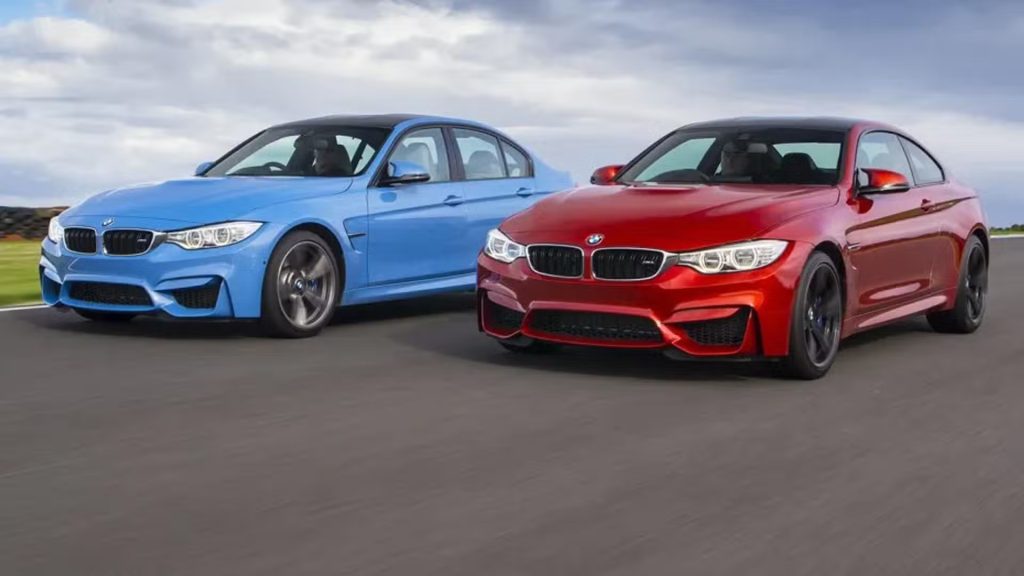
What better way to experience BMW’s quintessential M model than in the form it was first introduced? The M4’s weight distribution is closer to BMW’s ideal 50:50 balance, and it is marginally lighter than its four-door counterpart.
However, these differences are so subtle that they are virtually imperceptible from behind the wheel. The M4’s sleeker two-door design is certainly an appealing feature at any speed.
While it comes with a higher price tag (more details on that below), the M4 includes additional standard features, such as an M Carbon roof and LED headlights with laser light technology.
Whether these features justify the $3,000 price gap is subjective. For some, it might be worth it, but we’d be content to skip them and save the money.
BMW is known for producing practical performance cars, and the M3 provides an excellent opportunity to experience its most iconic model in a family-friendly four-door body.
There is no performance compromise compared to the coupe, and the extra doors enhance its usability for those who often travel with more than one passenger. Rear-seat space is more generous, and the trunk offers slightly more storage capacity.
The M3 also features the aggressive rear arches and purposeful stance of a performance sedan. The biggest advantage, however, is the $3,000 price difference, which offers considerable savings over the M4. Though there are minor specification differences between the two models, they do not justify the entire price gap.
That extra $3,000 could be used for the $1,400 Executive Package, which includes a head-up display, power tailgate, full LED headlights, and a heated steering wheel. Adding the $700 Parking Assistant Plus and $500 ventilated front seats would still leave you $400 under the cost of the M4.
4. Fiat 500 Abarth
In fourth place, we have the Fiat 500 Abarth, a charming little car with an unexpectedly loud exhaust note. Unfortunately, the vehicle is let down by several flaws, including an awkward driving position, poor ergonomics, and significant blind spots.
While it’s quick and affordable, enthusiasts searching for a true performance car will likely find much better options.
The Fiat 500 Abarth stands as the high-performance variant of the 500 lineup, featuring a turbocharged and intercooled 1.4-liter four-cylinder petrol engine.
Beyond just engine upgrades, it receives performance-oriented enhancements across the suspension, braking system, and exhaust, all designed with track use in mind.
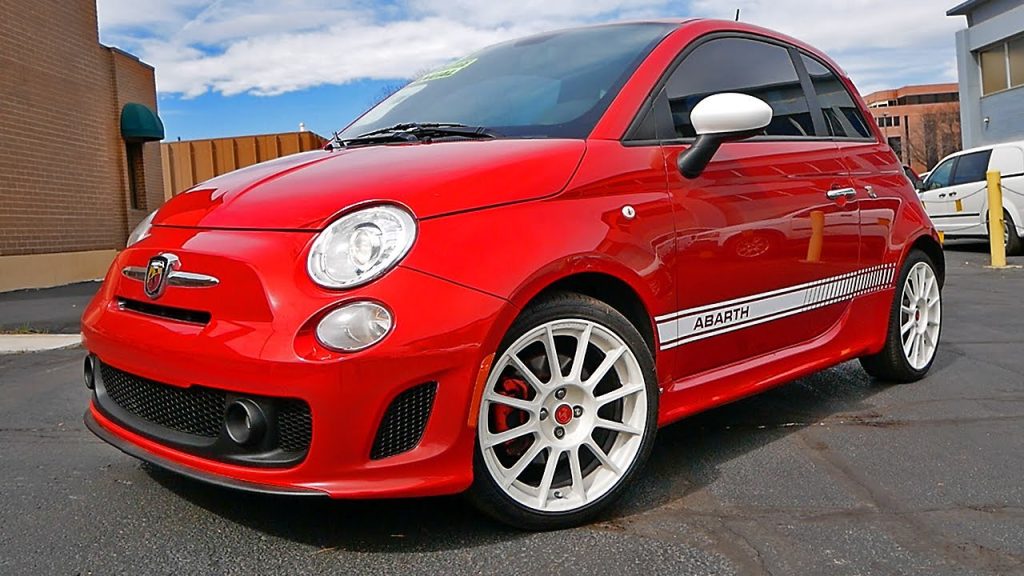
Yet, despite its sporty intentions, the 500 Abarth proves to be a competent daily driver, delivering a fun, street-legal go-kart feel wrapped in a compact two-door hatchback that captures a distinct retro-Italian charm. Priced competitively at an MSRP of $20,495, it undercuts many of its rivals in cost.
However, this affordability comes with compromises in practicality and overall versatility. Its small footprint brings both pros and cons—raising the question of whether it caters more effectively to the average commuter or the track-focused enthusiast.
With a starting MSRP of $20,495, the Fiat 500 Abarth is an accessible option for those seeking performance on a budget—excluding taxes, registration fees, licensing, and a $1,495 destination charge from Fiat.
Its pricing positions it close to competitors like the larger, heavier Ford Fiesta ST and makes it roughly $5,000 less expensive than the Mini Cooper S.
As expected from a lightweight, compact hatchback, the 500 Abarth excels in handling and agility across most driving scenarios. It’s highly maneuverable in urban environments, easily weaving through traffic and slipping into tight parking spaces.
The steering is relatively communicative at all speeds, offering a decent sense of connection to the road with well-judged weight that keeps the driver informed of the car’s position.
Equipped with 16-inch wheels, the Abarth maintains solid grip, while its finely tuned brakes are especially effective through corners—helping counteract the model’s natural tendency toward understeer when pushed to the limit.
Standard across Fiat 500 models, Sport Mode amplifies performance with sharper steering and more responsive shift points, reinforcing the Abarth’s identity as not just a sharp city car but also a track-capable performer.
The model also features Abarth’s three-mode Electronic Stability Control, which allows for more dynamic control under spirited driving.
With its punchy turbo engine, purpose-built tuning, and vibrant driving character, the Fiat 500 Abarth delivers a spirited, playful experience that makes it stand out as a uniquely bold and engaging boutique hatchback.
3. 2025 Maserati MC20
Next on the list is Maserati. This isn’t just a single nameplate but the entire automaker. Sami included Maserati because, while its entire lineup is marketed as sporty and tailored for driving enthusiasts, the reality is that its vehicles generally fail to deliver on those promises.
Supercars are known for their bold aesthetics and functional aerodynamic flourishes, often prioritizing extreme styling in the pursuit of speed. But for those who lean toward a more refined, yet equally commanding visual appeal, the 2025 Maserati MC20 appears tailor-made.
Drawing on the flowing elegance of the GranTurismo, it molds those signature curves onto a mid-engine platform, enhancing the vehicle’s assertiveness without sacrificing its alluring restraint—by supercar standards, at least.
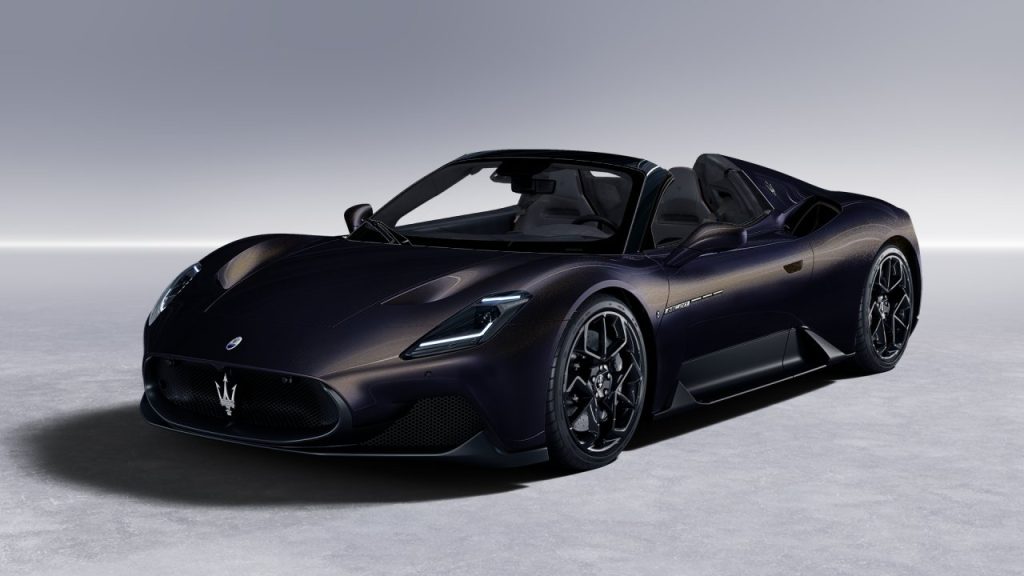
For 2025, Maserati introduces an even more daring version: the GT2 Stradale. This street-legal interpretation of the GT2 race car adopts sharper front-end sculpting and a motorsport-inspired rear wing and diffuser, tightening the visual connection to its track-only counterpart while adding performance to back it up.
However, the most significant development is the arrival of the all-electric MC20 Folgore.
Whether you’re drawn to the coupe’s sleek silhouette, the open-air thrill of the Cielo convertible, or the race-bred aggression of the GT2 Stradale, Maserati is making it clear: this is a golden era for high-performance luxury—if you’ve got anywhere from $250,000 to $500,000 to spend.
2. Subaru WRX STI
Our next pick is sure to upset many of you reading this. The Subaru WRX STI is one of our least favorite performance cars available today, and here’s why.
Despite its rally-inspired, all-wheel-drive setup and its passionate fanbase, the STI is lacking in almost every aspect, from the imprecise shifter and vague clutch to its sluggish engine and odd steering feel.
The STI also finished last in our sport-compact shootout by a significant margin, although it did at least manage to avoid the breakdowns the Type R experienced—TWICE.
For 2024, Subaru ramped up its performance game with the introduction of the WRX TR—a manual-only model designed for purists.
In 2025, they take things even further by replacing the TR with the WRX tS, short for “tuned by STI”—a phrase guaranteed to stir the soul of any performance enthusiast. The tS brings with it enhanced braking power, a revised suspension setup, and a collection of distinctive visual upgrades.
Equipped with a six-speed manual, the WRX Premium strikes a solid balance. It’s more affordable than the automatic-only GT and the more aggressively tuned tS, yet still offers attractive features like heated front seats and keyless entry with push-button start.
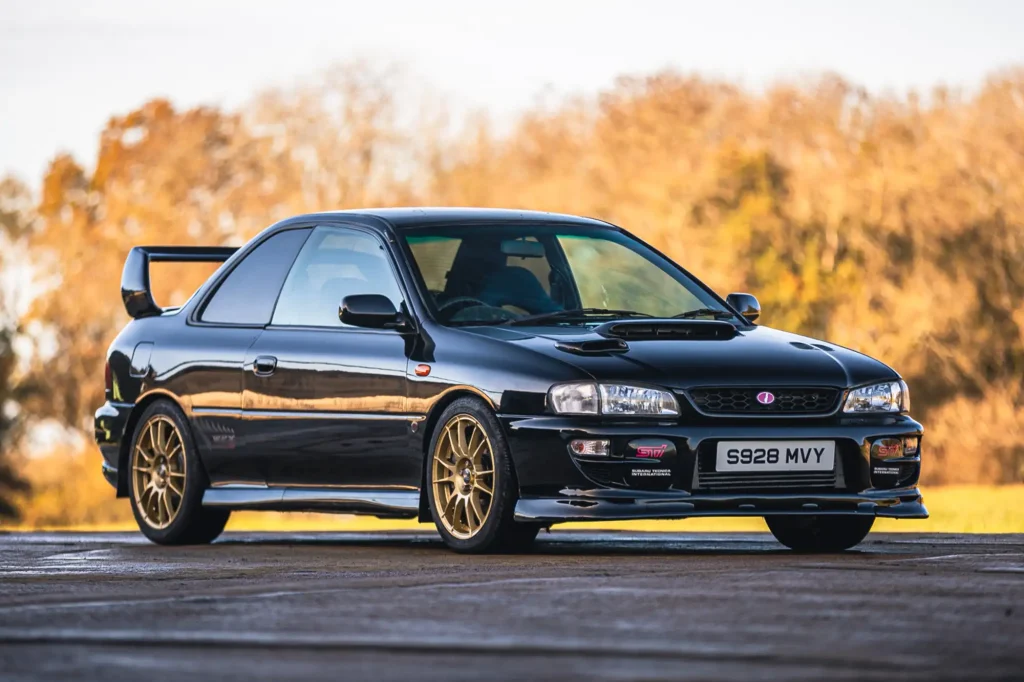
While the tS might be the ultimate pick for hardcore fans, those planning to modify their car themselves will find the Premium to be the more practical foundation.
Every WRX variant comes powered by a turbocharged 2.4-liter flat-four engine producing 271 horsepower and 258 lb-ft of torque, paired with Subaru’s signature all-wheel drive system.
A six-speed manual transmission is standard, while a continuously variable automatic transmission (CVT) is available on the Premium and Limited trims and comes standard on the GT.
Wheel sizes vary from 17 to 18 inches depending on the model, but the new tS sets itself apart with a redesigned suspension featuring adaptive dampers and upgraded Brembo brakes, including larger pads and rotors.
Subaru claims these enhancements improve fade resistance, pedal feedback, and overall stopping power. During our time on a racetrack, the tS brakes impressed, though they didn’t quite replicate that performance in controlled test track conditions.
Additional tS visual cues include blacked-out side mirrors, antenna, and rear spoiler, which contrast with gold brake calipers and unique 19-inch satin gray wheels.
1. Nissan Sentra NISMO
Finally, we arrive at the Nissan Sentra NISMO! When the request for suggestions for this Bottom-10 list was sent out, editor-in-chief Jodi Lai quickly replied with a single line: SENTRA NISMO.
She described it as “a massive letdown,” and Yarkony also called it utterly boring, even going as far as to say it was an insult to the NISMO brand.
Its pricing doesn’t help either, starting at nearly $26,000, making it more expensive than a base Volkswagen GTI, a car that is far superior in every way.
The last time Nissan delivered a performance-oriented Sentra was back in 2012 with the SE-R and SE-R Spec V, both equipped with a naturally aspirated 2.5-liter inline-four engine.
Since the launch of the current-generation Sentra, a sporty version had been missing from the lineup—until the debut of the Sentra NISMO.
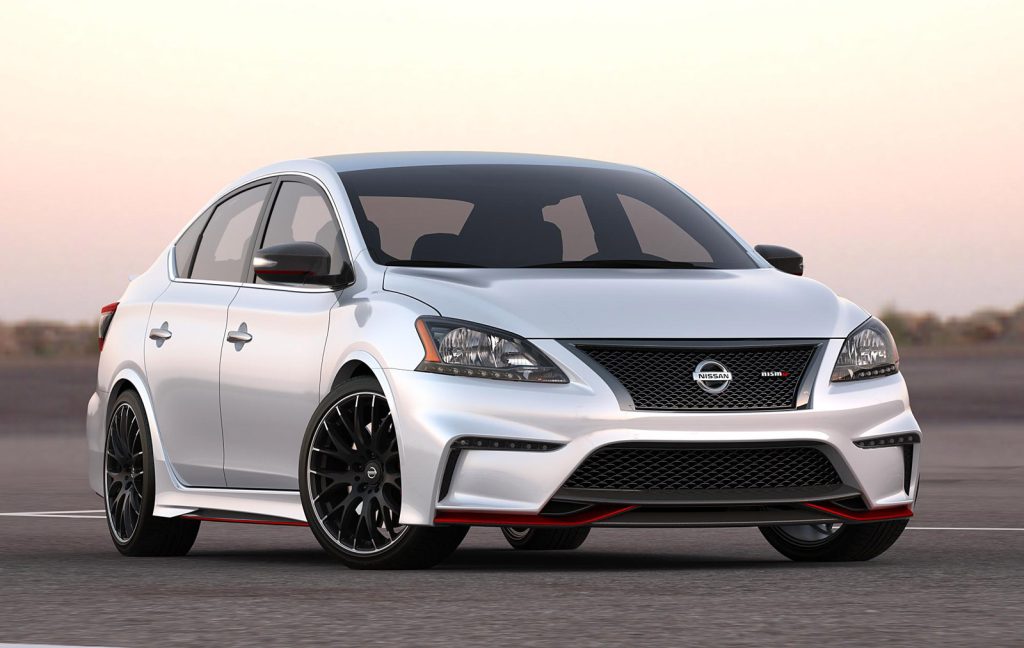
This updated performance model arrives with a bold new look, featuring red accents, enlarged lower air intakes, revised side sills, a redesigned rear diffuser, a more aggressive stance, and a rear lip spoiler. But how does it measure up against the sporty Sentras of years past? Let’s break it down.
Under the hood, the 2017 Nissan Sentra NISMO houses a 1.6-liter turbocharged four-cylinder engine paired with a six-speed manual transmission (with a CVT available as an option).
It’s the same powertrain found in the Sentra SR Turbo and the Nissan Juke, and unfortunately, it hasn’t been given a performance boost—remaining at 188 horsepower and 177 lb-ft of torque.
At the track, the NISMO hit 60 mph in 7.3 seconds and completed the quarter mile in 15.3 seconds at 92.4 mph, placing it in the same league as the Honda Civic Hatchback and Mazda3 2.5.
When stacked against the 2007 Sentra SE-R and SE-R Spec V we previously tested, the Sentra NISMO showed slight improvements. It reached 60 mph just 0.1 second quicker and finished the quarter mile 0.4 seconds faster, also posting a 2.5 mph higher trap speed than the SE-R.
However, the SE-R Spec V, which had a stronger 200-hp engine, still outpaced the NISMO, hitting 60 mph in 6.4 seconds and covering the quarter mile in 14.9 seconds at 93.6 mph.
The biggest gains for the NISMO came in braking. It stopped from 60 mph in just 112 feet, benefiting from larger brake discs and high heat-resistance pads. For comparison, the older SE-R and SE-R Spec V models took 133 feet and 126 feet, respectively, to come to a halt from the same speed.

